Soft Cell - Interview with Dave Ball
by John Clarkson
published: 6 / 8 / 2019
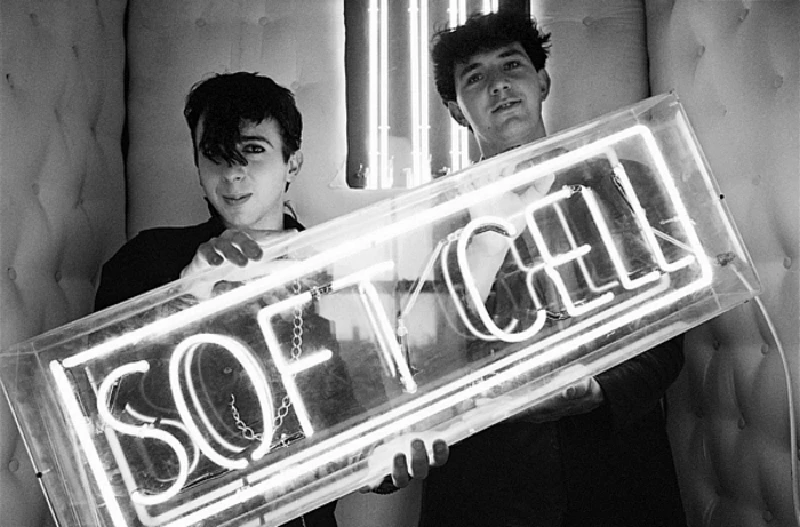
intro
Soft Cell keyboardist Dave Ball speaks to John Clarkson about the influential synthpop group's history and their new photograph book, ‘To Show You I’ve Been There’.
Much of what made Soft Cell so striking and photogenic in the early 1980s was that its two protagonists were in many ways linear opposites. Marc Almond, its flamboyant singer, was gay and, slight in frame, was petite in comparison to its keyboardist, the more taciturn and heterosexual Dave Ball. They brought similar contrasts to their music which combined together elements of torch song balladry, Northern Soul and minimalist electronica. After signing to Phonogram Records through indie electronic label Some Bizzare, the duo, who had met as students at Leeds Polytechnic, achieved massive worldwide success in 1981 with their second single, 'Tainted Love', a cover of an obscure 1965 Northern Soul track originally recorded by Gloria Jones, which went to no. 1 in seventeen countries. Soft Cell had further Top 5 hits with 'Bedsitter' and 'Say Hello Wave Goodbye', and their late 1981 debut album, 'Non-Stop Erotic Cabaret', went to No. 4 in the album charts. It showed an increasing preoccupation with the world of vice, and Soho's insomniac neon-lit landscape of porn cinemas, revue bars and call girls. There were two more Top 5 hits in 'Torch' and 'What!', but their second album, 'The Art of Falling Apart', when it emerged in early 1983, lacked the teasing playfulness of is predecessor and was a much darker offering. Even before their third album, 'This Last Night in Sodom', came out in mid-1984, Almond and Ball, burnt out with management and record label problems and both suffering from drug habits, had decided to split up. They reformed in 2001 and released a fourth album 'Cruelty With Beauty' the following year, but the reunion was put on hold when Almond was involved in a serious motorbike crash. Last September they reunited to release a nine disc box sset 'Keychains and Snowstorms', and to play their farewell gig at the O2 in London. Now they have published ‘To Show You I’ve Been There’, a limited-to-1300 copies which compiles together 150 often previously unseen archival photographs from their early beginnings to the farewell gig. It also includes new interviews with Almond and Ball, and an accompanying 7" single which comprises together reworkings of four of their early songs and demos, Pennyblackmusic spoke to Dave Ball about Soft Cell's history and ‘To Show You I’ve Been There’. PB: Both you and Marc came originally from seaside towns, Marc from Southport and yourself from Blackpool. Many of your songs focus in one form or the other on faded glamour. How much of an effect do you think your upbringings there had on your songwriting? MB: I think it was a massive influence. Both of us had that kind of interest in razzmattazz faded glamour and also the seedy side of showbiz, which ultimately probably attracted us to Soho. There was all this glitz, especially in Blackpool and more so than Southport with all its shows on the pier and music halls. All the massive stars played there. The Beatles played there, as did Jimi Hendrix and Frank Sinatra. It was back in the day like the Las Vegas of the North really. Southport was to a slightly lesser extent like that but it was a similar environment. All the big stars played there as well, and so we both had an influence in showbiz and that side of it. PB: You and Marc first met when you were students at Leeds Polytechnic. You say at the start of ‘To Show That I’ve Been There’ that you were “a very shy, withdrawn young man that hated having his photo taken.” DB: While I was interested in showbiz, I was more interested in being the bloke behind the scenes, and the production side of things, the music and the lighting. Marc was the flamboyant front person. He was a performance artist at college, and I originally started doing music for Marc’s performances. He had heard that I had been doing these funny little songs, and he said, “Oh, can I sing on some of them?” and that became Soft Cell. I had just bought an old synthesizer, which was actually quite a new thing. Synthesizers were used a lot by progressive rock bands in the ‘70s, but more often than not just as a little novelty sound, whereas in the late ‘70s and early ‘80s they were used a lot more as the main instrument rather than a little aside. So, by default I got dragged into the limelight. Marc said, “We have got to start doing shows,” and I was like, “What?” I had never considered myself as a performer. I still don’t. I just kind of lurk in the background (Laughs). PB: How did you start out playing music? Did you start out on the synths? DB: I started out when I was a kid. I didn’t have piano lessons but my sister did. We had an old upright piano, and I spent more time than my sister did on it. I had a tape recorder, and I used to spend my time plonking around on the piano and recording myself, and playing along to what I had just recorded. I suppose that it started there really. My dad was an electronics engineer, and so I had an interest in electronics from him as well. It was a mixture of those two things really. I certainly never planned to get into music. I was more into art initially. I was at art college for five years and then I ended up doing music, but my music is very much the way I would do my art. I always think of sound and music in colour and shapes. PB: What is the front cover of ‘To Show That I’ve Been There’ of? DB: It is a photo which my manager took. It is a photo of an interior of a neon, tube. Chris by his own admission is not a trained photographer, but you can get very lucky sometimes with those kind of random freak pictures. It is such a strong graphic. It stands alone as a piece of art. You know who it was without it saying Soft Cell on it. We have always had neon signs in there as long as Soft Cell has existed. It at all goes back to that seaside thing again. In Blackpool there were neon signs everywhere, and there were the Illuminations as well which were not neon but involved lots of flashy lights everywhere. There has always been a fascination with that. And Kraftwerk used them as well (Laughs). PB: One of the first pictures in ‘To Show That I’ve Been There’ is of one of your first gigs at Leeds Polytechnic. You already had a neon sign there with the band name on it even at that early stage. DB: I bought one. I had a summer job, and I got that made in Blackpool, and it cost me £80. It was a lot of money for me then, but I was committed to doing the band and I thought, “We need to stand out a bit,” and no one else was using neon signs. We didn’t have a drum kit in which we could put our name on it, so I thought, “A neon sign would be brilliant,” and people did notice us. Things like that do get you noticed (Laughs). PB: Soft Cell was originally briefly a three-piece and employed Steve Griffiths as “a technician.” What was his role? DB: He did all the projections. Marc used to have lots of slides, which he would use as the backdrop to his show. I would be doing the sound. Marc was the performer, and Steve did the visuals and lights. He was never involved in the music, just in the way things looked at all the early gigs. As soon as we started getting bigger and we were playing larger venues, we couldn’t go on using a little Kodak slide projector anymore, and he eventually dropped out. Steve was there probably for the first year. He was a fellow student. He was into making little films and taking slides. It was just an art project when we started. We had no aspirations to be a pop group. It was just a little kind of art project really. PB: Soft Cell was a mixture of torch song balladry, electronica and Northern Soul. Marc obviously bought the torch song component to the band and you the electronica. Who brought in the Northern Soul influence? DB: That was me. I was obsessed with it. When I was growing up in Blackpool, I lived about five minutes away from the Blackpool Mecca. After Wigan Casino, Blackpool Mecca was probably the biggest Northern Soul venue in the UK. I used to go there a lot, and everywhere you went, on the fun fairs and the Pleasure Beach, you would just hear Northern Soul. There were loads of record shops in Blackpool in those days with just racks and racks of these records. I played Marc ‘Tainted Love’, and he loved the lyrics, and after he heard it again he wanted to cover it, and I said, “Well, let’s do something that is a bit different and make an electronic version of it,” and the rest, as they say, is history. (Laughs). PB: You had, however, a jaded relationship with ‘Tainted Love’ at one point. You didn’t play it when you were at the height of your fame on one American tour. DB: We were young and stupid, but we got so sick of promoting that record. It has been no. 1 in seventeen countries, and we had been to all of those countries. We had been on radio shows, done TV interviews and we got sick to death of it. We were scared as well of just being thought of as one hit wonders. In some places we probably are one hit wonders (Laughs). I think in America not the diehard fan, certainly but most people had only heard of that one song. We played Los Angeles, San Francisco and New York in 1982, and we refused to play ‘Tainted Love’, and that was the only song that the American people knew us for (Laughs). It was a bit stupid really. In retrospect we should have played it, but we felt that we were being turned into pop puppets. We hated that idea. We didn’t want to play all these cheesy pop shows. PB: You had a reputation for being fairly confrontational. Marc was, however, given a very hard time for being gay. How much of that was a reaction to that? DB: At the time nobody was allowed to say that. These are very different times that we live in now, and even our record company told us that we were not allowed to mention it. It was just not talked about. I have never had a problem with what sexuality Marc is. It doesn’t bother me. It is up to him. People used to think that I was gay. Freddie Mercury infamously asked me, “Are you and Marc lovers?” And I was like, “Well, actually no. This my girlfriend, Freddie” (Laughs). We are talking about forty years ago. It wasn’t as open as it is now, and everyone is relaxed about it or most normal people are relaxed about it now. It was a totally different time. I think we were like that anyway. We were into bands that were confrontational and challenging like Suicide. We were trying to make a pop version of that, which we did in a way. There is a book that has come out recently called ‘Suicide: A Love Story’, and there is a quote in there from Alan Vega - I used to know Alan quite well. I met him many times. Sadly he is no longer with us - and he was asked, “What do you think of Soft Cell?” and he said, “Yeah, man, they had some good songs, but they were kind of like Suicide the easy way” (Laughs). I think that sums us up really. We were not quite as confrontational as them, but we had the same heart and spirit. We were, however, not going to get on ‘Top of the Pops’ if we did ‘Frankie Teardrop’. PB: Apparently you had written over 200 songs by the time you came to do ‘Non-Stop Erotic Cabaret’. How did you manage to get those down to those ten songs that make up that album? DB: We always made note of which songs the fans liked best, and which ones everyone was singing along to. ‘Bedsitter’ was an obvious one. ‘Chips on My Shoulder’ was another obvious one, so we were always very aware of what our fans were into and we whittled it down. They were all based on what our fans liked the most without taking an actual survey, and just upon the reaction of what they were into at gigs. It was much more difficult putting the second album together (Laughs), although we were in a different mental phase then I think. PB: ‘Non-Stop Erotic Cabaret’, despite much of its subject matter, seems in hindsight quite innocent, while both ‘The Art of Falling Apart’ and ‘This Last Night in Sodom’ were much more dark. Would you agree? DB: Early Soft Cell went through three phrases. There is a pop naivety on ‘Non-Stop Erotic Cabaret, which came with being fresh out of art college and going into the studio. By the time of ‘The Art of Falling Apart’ we had been through the mill a bit by then. I was also having problems with my relationship with my girlfriend by then, and it was a bit more world weary. We had also discovered a few Class A drugs along the way. We were getting into some dark situations, and were spending a lot of time in heavy duty clubs in New York. We were trying to deal with some dark subjects, which the record company weren’t exactly happy with but a lot of the fans liked it. It is not just a pop album. We were discovering the dark things in life and growing up very quickly. This Last Night in Sodom’ was total self-destruct (Laughs). That was when we had totally fallen out with everyone. We were sick of the record company. The management was non-existent. It was out of control. ‘The Art of Falling Apart’ was the precursor to falling apart (Laughs). On ‘This Last Night in Sodom’ we were actually falling apart. We made a conscious decision. We went into the studio and said, “Right! This is the last album, and we will do two shows at the Hammersmith Palais, and that is it.” It was totally amicable, but we both looked at each other and went, “If we don’t stop one of us is going to fucking die.” PB: You did one reunion at the start of the century, and recorded a fourth album, ‘Cruelty Without Beauty’. MB: It went quite well at first. We did a lot of festivals, and we played all around Europe, and then we made a slightly ill-fated journey around America. Then the last gig we did was near Venice at a festival. There were plans to do more stuff the following year and more festivals, and then Marc had a dreadful motorbike accident and that put an end to that. There were issues and problems after that, and we ended up not speaking for bloody ages, but we patched things up and Marc and I are fine now. We have known each other for so long. I am glad that we are grown up enough that we are still speaking and still work together. It was horrible not speaking. You hear about these bands that can’t be in the same room together. What are we? The Eagles or Pink Floyd? (Laughs). It is ridiculous, isn’t it? PB: Why did you decide to do the one big farewell show at the O2 last year rather than do a last full-scale reunion? DB: I didn’t decide actually. It took about two years for the box set to be put together, and then it was tentatively suggested by Universal and various people concerned that they arranged a meeting between Marc and I after we had fallen out, and I was like, “Okay! I am up for it.” So, we met at a posh hotel in Mayfair, and Marc was drinking tea and I was drinking a very expensive beer, and there were a few other people there, and we had a chat, and then the next thing was “Would you be up for doing a show?” I was like, “Really! I have never thought about it before. I thought that we were just doing the box set.” And it was like, “No, we are thinking of doing a big show,” and I said, “Where would that be? The Royal Albert Hall or something?” and I was told, “No, Marc doesn’t really think that is Soft Cell and we're thinking of the O2.” I thought, “There is no way that we can fill that place,” but much to my amazement we did. It was fantastic. PB: One should perhaps never say never again, but is this the definitely the end of touring for Soft Cell? DB: As you say, one should never say never again but don’t hold your breathe. All I would say is that I am always up for offers. We are working on a new record, and we have signed to BMG, and there will be a new album, but I think that more what we are going to do now is more recording based. My health at the ripe old age of sixty isn’t as good as it was, so I don’t want to be running around touring for six odd months but I will do the odd appearance if it is required. I am happiest in the studio, and that is where we are at the moment. PB: At one level you have gone full circle with ‘To Show That I’ve Been There’ because the accompanying 7” EP features some of your earliest recordings. Why did you decide to choose the four songs that you did here and re-record them? MB: ‘Science Fiction Stories’ was the first song that I wrote on the synthesizer. I wrote the words as well. There was only one verse, but that was the first song I did on a synth. I had originally done a version of that with me doing the vocals, but that was when Marc first sung one of my songs and we became Soft Cell. It is a re-recording of that, but at least you can hear what is going this time which you couldn’t on the original demo version. ‘Bleak is My Favourite Cliché was the first song in which Marc wrote the lyrics for, and I have always thought the lyrics are fantastic and they are so relatable even forty years on. ‘The Girl with the Patent Leather Face’ was one of the first songs that we ever released and appeared on the compilation LP ‘Some Bizzare Album’. We obviously couldn’t use the original recording, but it was nice to rework that. And ‘Back to Nature’, the last track, is a Fad Gadget cover. Frank Tovey AKA Fad Gadget was a fellow student. He was a third year student at Leeds Polytechnic in the Fine Art department. I was in first year and Marc was in second year, and we knew Frank. He was another performance artist, and straight after college he formed Fad Gadget. He died tragically and very early. It was kind of a tribute to Frank really. PB: Finally what are your own plans for the future musically? You have said that you are recording with Soft Cell. Are you doing solo material as well? MB: I am going to do a new solo album at some point. I have been doing stuff with a guy called Jon Savage, who is not the music journalist, and we did an album called ‘Photosynthesis’ in 2016, and we will probably do a follow up to that. I am doing another thing called Module in Monologues with me on synthesizers and my partner Scarlet West who is a writer and raconteur, and she is going to be reading her work over these modular noodlings which is quite good fun. I did an album recently with Anni Hogan which is getting great reviews, and I am also doing new stuff with the Grid, my regular band, as well, so I am keeping myself busy in the studio (Laughs). I have also got a book coming out as well, my autobiography. The publisher is hoping that will come out at the end of August. We will be doing some signings and the usual Q and As, and I might be doing an audio book of it as well. PB: Thank you.
Band Links:-
https://www.softcell.co.ukhttps://www.facebook.com/softcellband/
https://twitter.com/softcellhq
Have a Listen:-
Picture Gallery:-
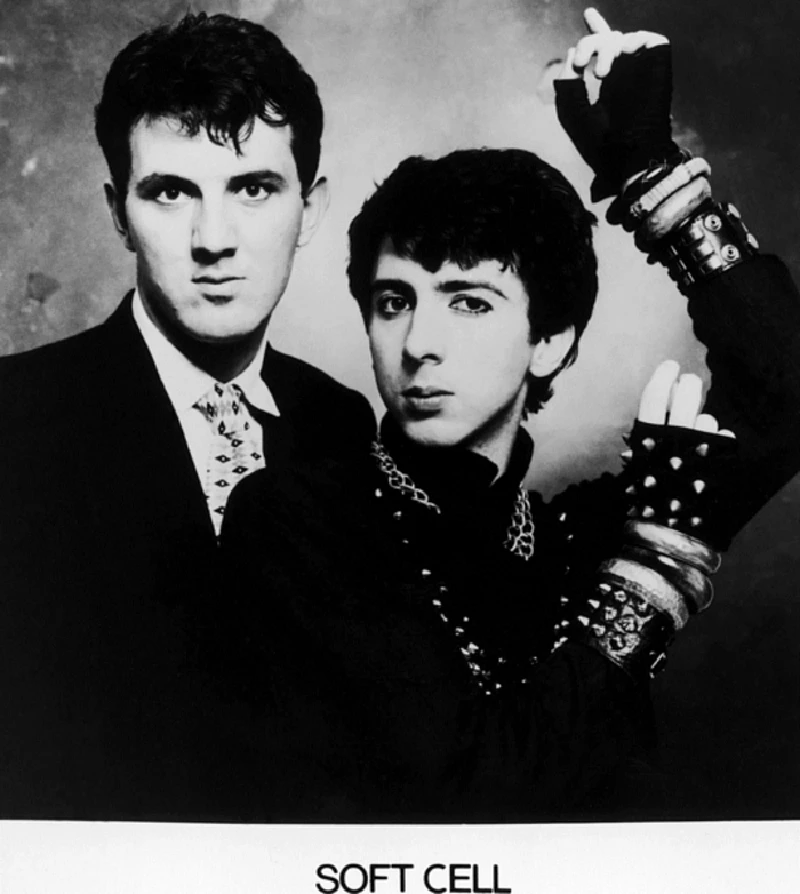
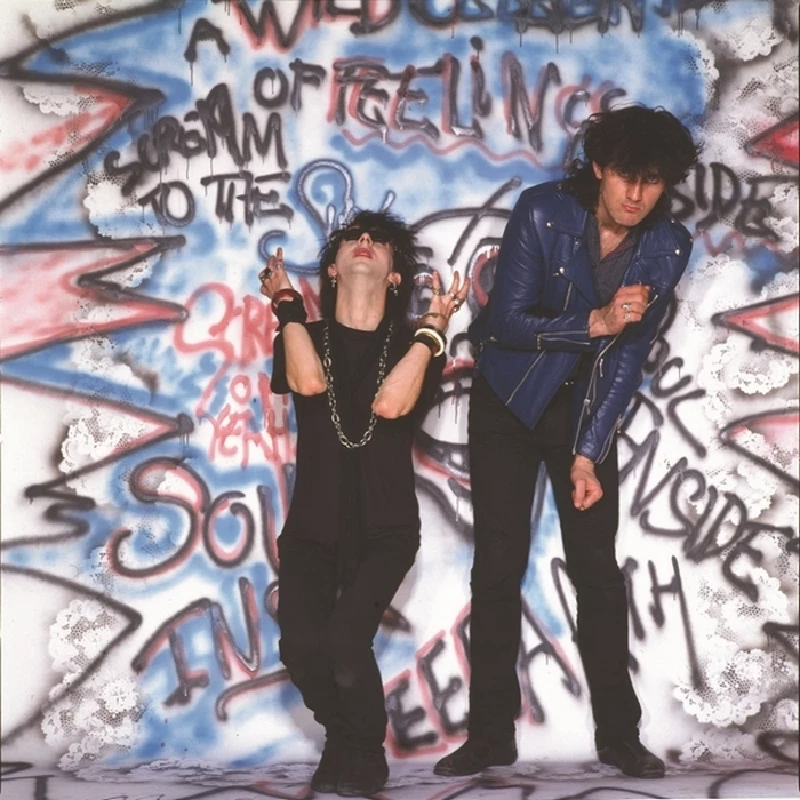
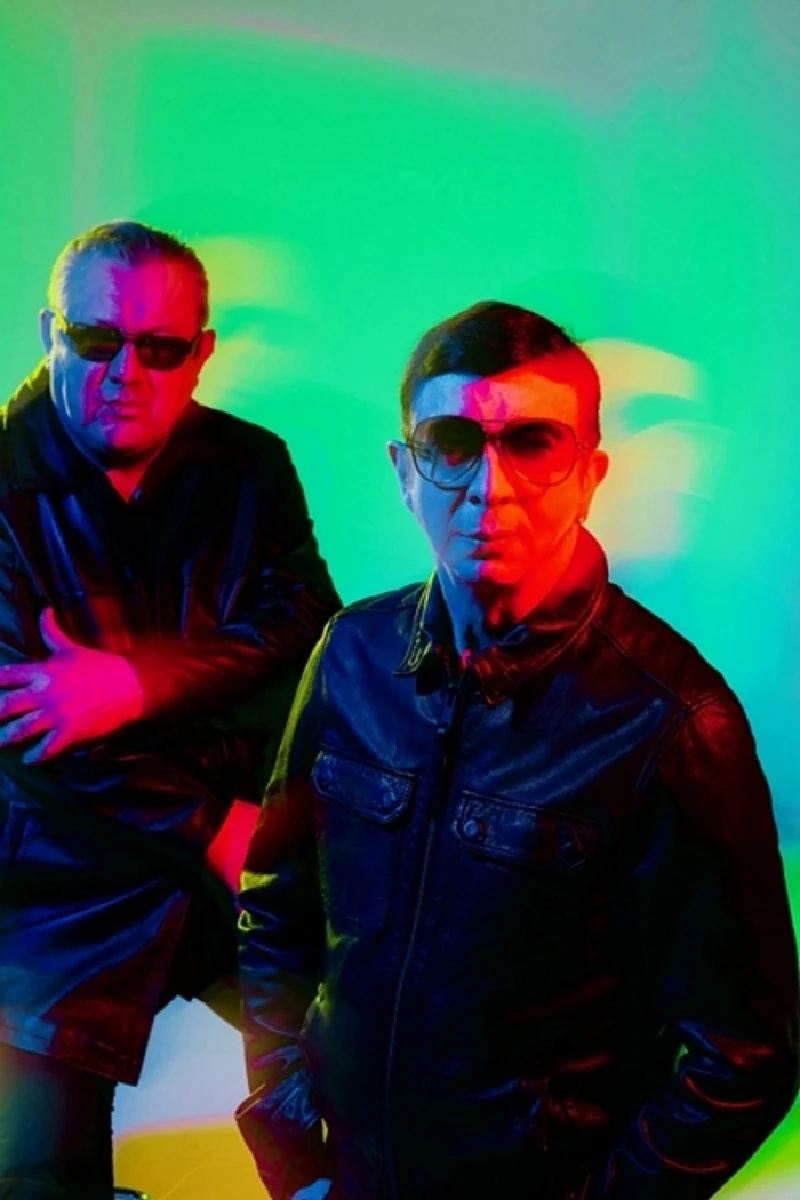
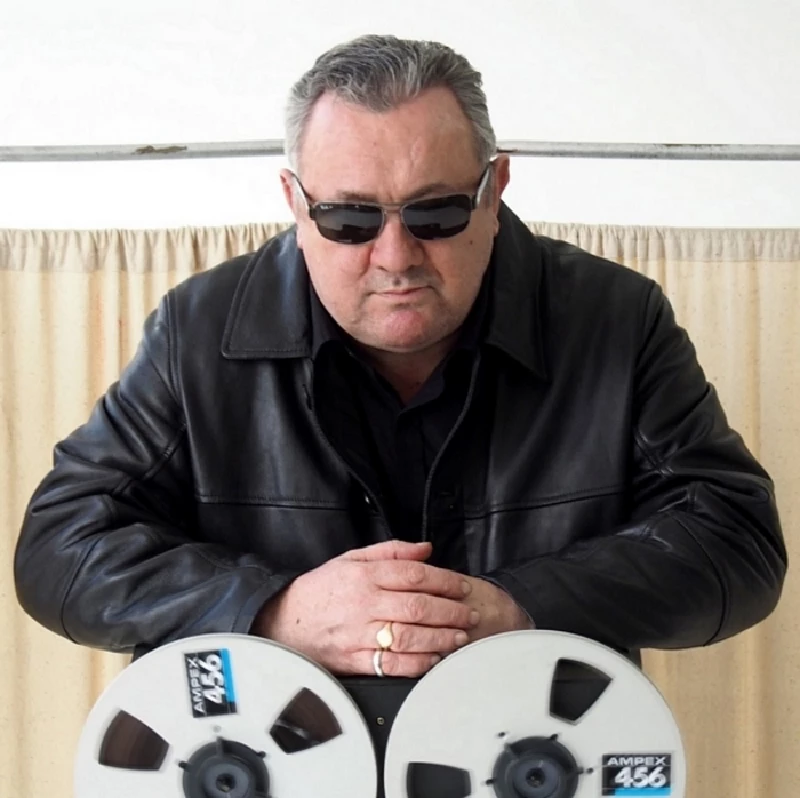
interviews |
|
Interview (2008) |
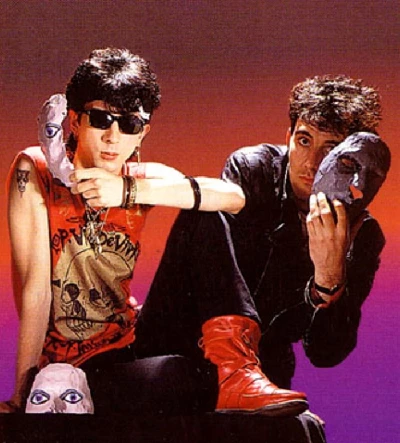
|
| One of the best known and most controversial acts of the early 80’s, Soft Cell are about to release 'Heat', a double CD of remixes. John Clarkson talks to Dave Ball from the duo about his long musical relationship with Marc Almond and the band's history |
soundcloud
reviews |
|
Happiness Not Included (2022) |

|
| Excellent fifth album from groundbreaking 80's synth duo Soft Cell |
most viewed articles
current edition
Carl Ewens - David Bowie 1964 to 1982 On Track: Every Album, Every SongBillie Eilish - O2 Arena, London, 10/7/2025
Bathers - Photoscapes 2
Bathers - Photoscapes 1
Cleo Laine - 1927-2025
Hothouse Flowers - Photoscapes
John McKay - Interview
Editorial - July 2025
Simian Life - Interview
the black watch - Interview
previous editions
Heavenly - P.U.N.K. Girl EPTrudie Myerscough-Harris - Interview
Pixies - Ten Songs That Made Me Love...
Boomtown Rats - Ten Songs That Made Me Love....
Fall - Hex Enduction Hour
Peter Paul and Mary - Interview with Peter Yarrow
Sam Brown - Interview Part 2
And Also The Trees - Eventim Apollo, London, 21/12/2014.
Doris Brendel - Interview
Place to Bury Strangers - Interview
most viewed reviews
current edition
Sick Man of Europe - The Sick Man of EuropeAmy Macdonald - Is This What You've Been Waiting For?
Phew, Erika Kobayashi,, Dieter Moebius - Radium Girls
Alice Cooper - The Revenge of Alice Cooper
Blueboy - 2
Lucy Spraggan - Other Sides of the Moon
Cynthia Erivo - I Forgive You
Bush - I Beat Loneliness
Davey Woodward - Mumbo in the Jumbo
Philip Jeays - Victoria
related articles |
|
Marc Almond: Photography (2017 |
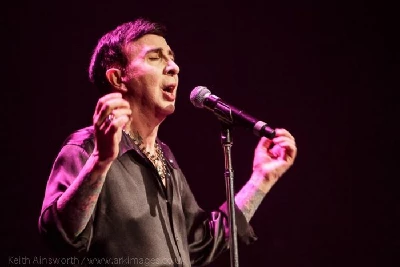
|
| Keith Ainsworth photographs Marc Almond at a show at Warringon Parr Hall on his latest UK tour |
Pennyblackmusic Regular Contributors
Adrian Janes
Amanda J. Window
Andrew Twambley
Anthony Dhanendran
Benjamin Howarth
Cila Warncke
Daniel Cressey
Darren Aston
Dastardly
Dave Goodwin
Denzil Watson
Dominic B. Simpson
Eoghan Lyng
Fiona Hutchings
Harry Sherriff
Helen Tipping
Jamie Rowland
John Clarkson
Julie Cruickshank
Kimberly Bright
Lisa Torem
Maarten Schiethart